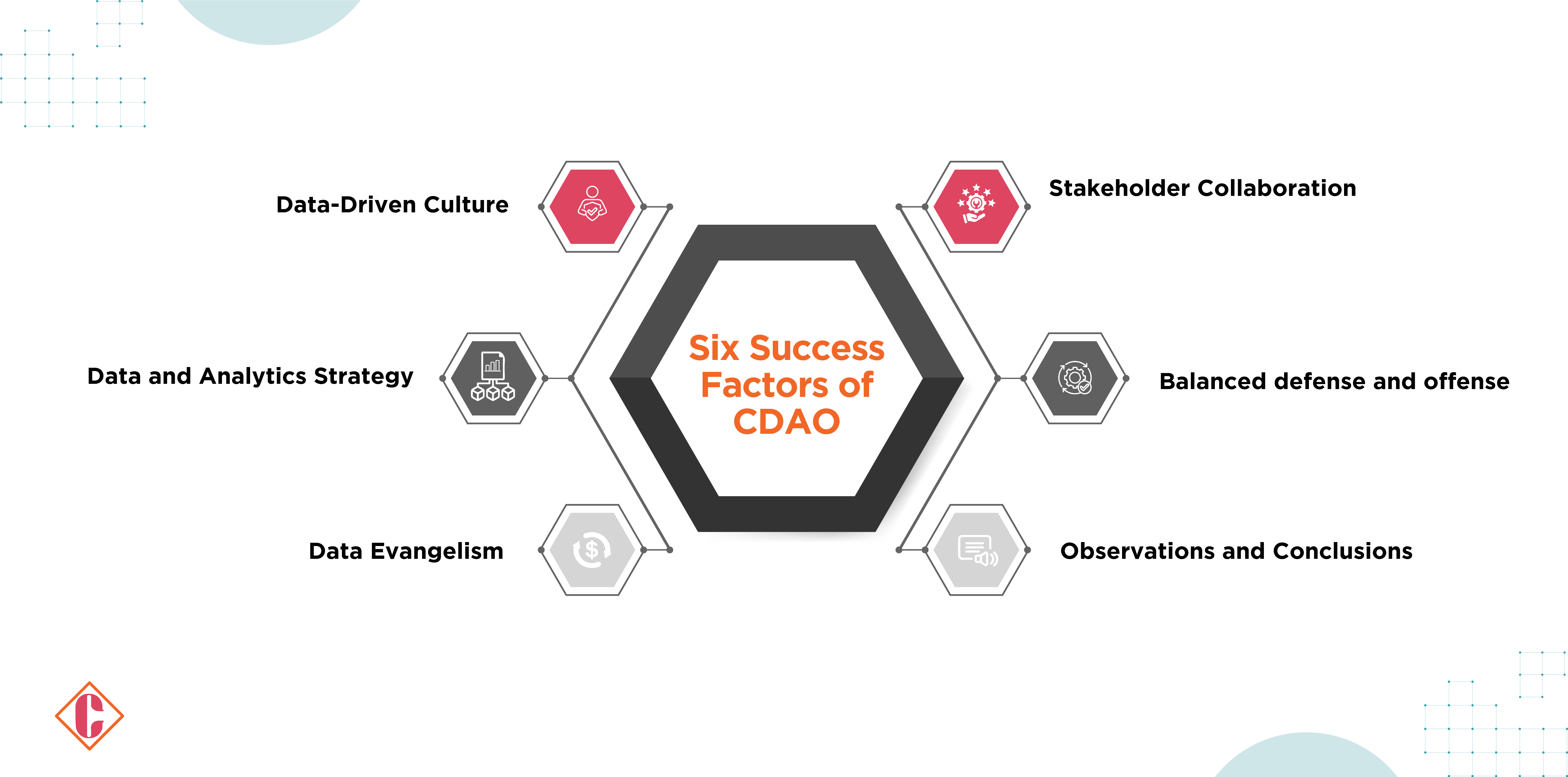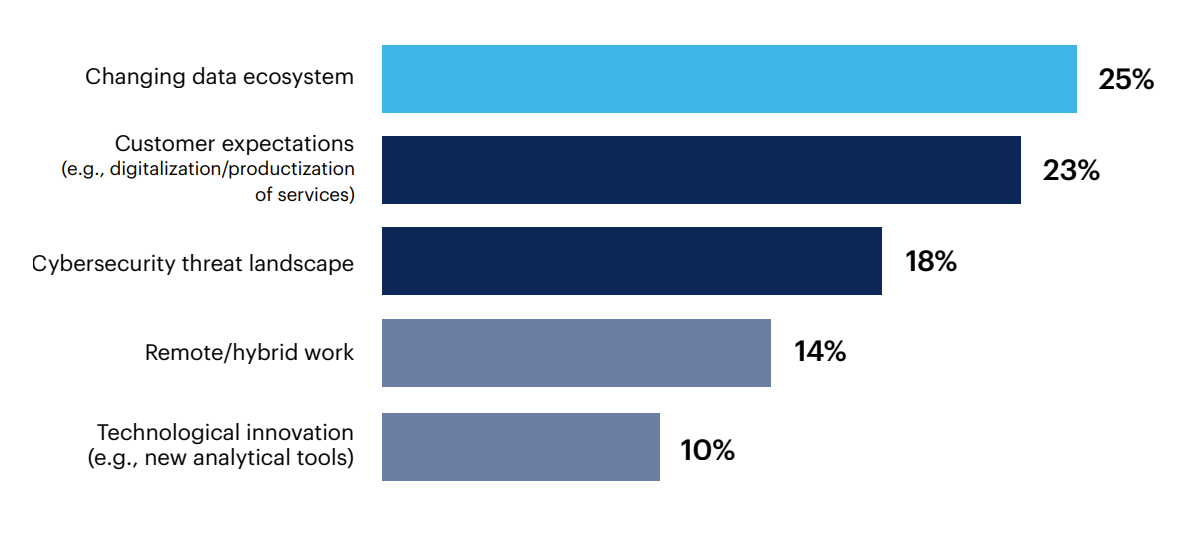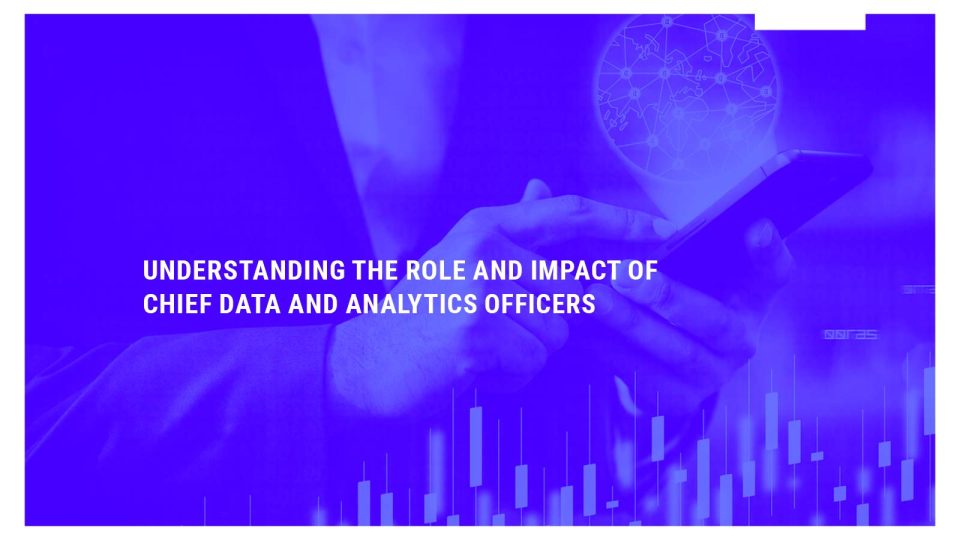Data is ubiquitous, but not all organizations use it to its fullest potential. This is where the Chief Data and Analytics Officer (CDAO) steps in. According to a recent Experian report, the primary motivations for hiring a CDAO include capitalizing on big data opportunities, creating a competitive advantage through data, and having a consistent approach to minimize risk in data-driven projects. Companies increasingly rely on CDAOs to create competitive advantages, develop new products, and offer new services through data.
Defining the Role of a CDAO
3 Personas of Successful CDAOs
Conductor: Lead the transition towards a data-driven culture.
Composer: Foster business innovation and monetization opportunities through data.
Performer: Ensures pragmatic business value through actionable insights.
Six Success Factors for Chief Data and Analytics Officers

Data and Analytics Strategy
A clear strategy sets a CDAO up for success. The strategy should be business outcome-oriented, including—the where relevant—organization’s digital transformation strategy. There must be a clear roadmap to reduce confusion around priorities and set expectations for how the CDAO’s success will be measured.
Business Value Realization
Key priority: Deliver measurable business benefit from data and analytics solutions. Innovate data products to meet business demand, moving an organization up the intelligence maturity curve. Define and track KPIs aligned to business outcomes. Communicate the high-performing KPIs as success demonstration and take actions on underperforming KPIs for continuous improvement.
Data-Driven Culture
The biggest challenge that a CDAO has to meet is building a data-driven culture. Data literacy is the first step developed through organizational change management initiatives. Data and analytics communities can drive a data-driven culture with best practices and community nurturing initiatives. Visible executive leadership support for positive data management behaviors and accountability of data stewardship practices while rewarding data-driven decision-making.
Stakeholder Collaboration
A critical aspect of a CDAO’s success is cross-organizational collaboration. In many situations, IT and business functions would need to converge, or data producers and consumers would have to come together in arrangements that a CDAO may have to orchestrate with mutual relationships aligned. Knowing and meeting the requirements of both can build economies of scale and intelligence efficiencies.
Provide balanced defense and offense
A balanced approach to data governance should be followed. This would require endeavoring to balance data protection and data access. It involves managing data quality and trust using data observability rather than data lockdown. This can work through a hybrid operating model where data owners may have some sovereignty over the data, and data sharing can happen in a safe manner across the enterprise.
Data Evangelism
Although this is one part of technology, the critical part will be promoting the concept of “data as an asset” and getting others to appreciate these very fast. It would be very critical to create data monetization opportunities, using data narratives to explain and interpret data implications, etc. The CDAO has to be an organization’s chief data steward, promoting quality, innovation, and decision-making centered around data.
Observations and Conclusions
The role of CDAO relates more to organizational dynamics and interpersonal abilities than technical expertise. This position would be critical to business transformation and drive business performance by data and analytics. In a world where data and analytics rise to the top of today’s digital transformation agenda, the role of the CDAO becomes ever more pivotal. Understanding these critical success factors and the competencies required can drive further success with regard to data and analytics initiatives and overall business outcomes.
Also Read: What is the Difference Between Data Engineering and Data Management?
CDO vs. CAO vs. CDAO
CDO, CAO, and CDAO often overlap in nature because of their responsibilities within the data and analytics space. But here are some differences:
Chief Data Officer (CDO):
The CDO is responsible for the management of data within an organization. This may include the overall strategy concerning data, running activities to gather data, setting standards of data quality, and making sure that the transmission and storage of data are safe.
Chief Analytics Officer (CAO):
A CAO turns data into useful intelligence that may be acted on to drive decision-making. Typical responsibilities for this role would include setting up and running data science and data analysis operations in concurrence with other departments in efforts to improve the business through data-driven analytics.
Chief Data and Analytics Officer (CDAO)
A position encompassing both the CDO and CAO.
Although there is some terminological confusion for many organizations, the roles of CDO and CAO come under the title of CDAO. Therefore, consolidating such positions maximizes resources, reaps economies of scale between data management and analytics, and probably enhances compliance. In larger organizations, independent CDOs and CAOs would report to a CDAO.
Top Challenges that CDAOs Faced
Managing Data of Growing Volume and Complexity
Organizations today collect vast amounts of data from various sources, such as customers, employees, and business operations. According to a 2023 KPMG survey, 70% of business leaders reported an increase in data collection volumes over the past year. The insights derived from customer data collection are substantial, with McKinsey suggesting that companies engaged in customer analytics are significantly more likely to outperform competitors. As data collection efforts continue to escalate in 2024, handling the volume and complexity of data remains a pressing challenge.
Ensuring Data Quality and Governance
Ensuring data quality is paramount for Chief Data and Analytics Officers (CDAOs) to guarantee that organizational decisions are based on accurate and reliable data. This involves implementing robust data governance processes and policies to ensure data is collected, stored, and utilized in a compliant and ethical manner. Measures like regular data audits, documentation of workflows, staff training, data cleansing, validation checks, and establishing accountability frameworks are essential components of maintaining data quality.
Integrating Data Silos
Data silos, isolated repositories of data inaccessible to other parts of the organization, pose significant challenges. This fragmentation can lead to inefficiencies and hinder collaboration across departments. Breaking down these silos is critical for CDAOs to integrate data seamlessly across the organization, enabling a holistic view of business operations. With advancements in consolidated data management platforms in 2024, solutions to these challenges are more accessible than ever before.
Developing a Data-Driven Culture
To fully harness the power of data, organizations must cultivate a data-driven culture aligned with their business objectives. This cultural shift involves fostering data awareness among employees, integrating data and analytics into everyday business functions, selecting metrics that reflect organizational goals accurately, and providing specialized analytical training. Over 80% of companies in a study by Collibra indicated having dedicated teams responsible for building data literacy and promoting a data-driven culture.
Balancing Innovation and Security
While leveraging data for innovation is crucial for organizational growth, CDAOs must also prioritize data security and privacy. Managing the adoption of technologies like artificial intelligence (AI) and machine learning (ML) for data analysis requires understanding their implications and ensuring responsible usage. Additionally, navigating the evolving regulatory landscape surrounding data privacy and compliance poses ongoing challenges. Addressing these issues requires staying abreast of regulatory changes and closing the skills gap by attracting and retaining skilled data professionals through strategic talent development initiatives.
How are Changing Data Trends and Customer Expectations Shaping the Role of Data Leaders

The evolving landscape of the data ecosystem and the transformation in customer expectations increasingly influence the Chief Data and Analytics Officers (CDAOs) role. According to a Gartner survey, 25% of respondents identified the shifting data ecosystem, marked by rapid changes in data management and analytics capabilities, as the primary factor impacting the CDAO role over the past year. Close behind, 23% of the participants highlighted evolving customer expectations, particularly the demand for digitalization and productization of services, as the most significant driver. These twin pressures underscore the dynamic environment in which data leaders operate, navigating complex data strategies and customer-centric solutions to steer their organizations toward informed, data-driven decision-making.
Also Read: Mitigating Risks of Poor Data Management Strategy That Can Kill Your Business
Key Benefits of Having a CDAO As Part Of Your C-Suite
- Strategic Signal: Demonstrates to employees, customers, and suppliers the company’s commitment to data and analytics.
- Resource Allocation: Helps secure funding for data-related projects and initiatives.
- Data Quality: Enhances the quality of data.
- Innovation: Drives innovation through data-based insights.
- Data Literacy: Improves the organization’s data literacy.
- Monetization: Supports monetization of insights derived from data.
- Data Flow: Ensures efficient data flow between organizations.
- Integration: Breaks down silos between systems and departments.
- Security: Enhances security by increasing understanding of data’s role and the importance of its protection.
Top Voices in Data and Analytics: CDAOs Making Waves in the Industry
Pallaw Sharma
SVP, Chief Data and Analytics Officer, Cisco

As the SVP and Chief Data and Analytics Officer at Cisco, Pallaw drives the development and operation of data analytics products, playing a pivotal role in Cisco’s shift to an XaaS model. Under his leadership, his team has enhanced revenue streams and customer satisfaction by transforming complex problems into structured frameworks, building robust data analytics solutions, and applying sound business judgment to improve global operations.
Kiran Samudrala
Chief Data and Analytics Officer and Centre Head at Equifax

Kiran is celebrated as a transformation leader, with a strong emphasis on a customer-first approach, data, analytics, and digital innovation. He has consistently demonstrated his ability to build world-class teams skilled across the full spectrum of Data and Analytics, encompassing data management, data science, business intelligence, and the integration of Artificial Intelligence.
Yasen Dimitrov
Chief Data and Analytics OfficerChief Data and Analytics Officer
IntelligenceNODE
Myths Surrounding the Role of a Chief Data and Analytics Officer
Myth 1: Analytics Eliminates Human Bias Completely
It is often assumed that analytics and machine learning can remove all human bias from decision-making processes. However, CDAOs understand that since algorithms are developed and trained by humans, they can still reflect inherent biases present in the training data. Therefore, it is crucial to maintain a critical perspective on algorithmic outputs and ensure transparency in how these results are derived.
Myth 2: Algorithms Are Infallible
Many place unwarranted trust in the infallibility of algorithms and statistical models. CDAOs are aware that these tools, while powerful, are not foolproof. The development of algorithms should be accompanied by rigorous testing and validation processes to ensure reliability. Continuous oversight and the ability to challenge the underlying assumptions of these models are necessary to maintain their effectiveness and trustworthiness.
Myth 3: Data Science Is an Esoteric Discipline
Data science is often perceived as a mysterious and highly specialized field. In reality, it is an evolution of well-understood statistical methods enhanced by modern computational power. CDAOs can demystify data science by highlighting its basis in traditional statistical inference and its practical applications in solving contemporary business problems.
Myth 4: More Data Scientists Mean Better Outcomes
There is a misconception that increasing the number of data scientists will automatically enhance an organization’s data analytics capabilities. CDAOs recognize that the efficiency of data scientists can be significantly improved by optimizing their workflows and minimizing time spent on non-value-added activities such as data preparation. Leveraging platforms that streamline data management processes allows data scientists to focus on extracting meaningful insights.
Myth 5: Data Analytics Should Operate as a Separate Department
Some believe that data analytics functions best as an isolated department. In contrast, CDAOs advocate embedding analytics within cross-functional teams to ensure that insights are directly applicable to various business areas. This integration fosters collaboration and ensures that data-driven decision-making permeates the entire organization.
In a Nutshell
Since data and analytics play a central role in driving organizational success, the prominence of the Chief Data and Analytics Officer (CDAO) role will be critical to securing improvement in the effectiveness of data and analytics initiatives and outcomes. The move to analytics suggests a significant broadening in the remit for CDAOs and their teams, which have managed significant advancements in data technology, machine learning, and AI. Therefore, the role of the CDAO is being redefined to lead organizations and meet new opportunities and increased risks of ever-greater expectations in a sustainable future.
[To share your insights with us as part of editorial or sponsored content, please write to psen@itechseries.com]





 Yasen has dedicated over 10 years to data analysis and machine learning, transforming his passion for logic and data-driven solutions into a core organizational focus. As the co-founder and Chief Analytics Officer at Intelligence Node, Yasen leads a data analytics company serving the global retail community with proprietary pricing and merchandising analytics.
Yasen has dedicated over 10 years to data analysis and machine learning, transforming his passion for logic and data-driven solutions into a core organizational focus. As the co-founder and Chief Analytics Officer at Intelligence Node, Yasen leads a data analytics company serving the global retail community with proprietary pricing and merchandising analytics.